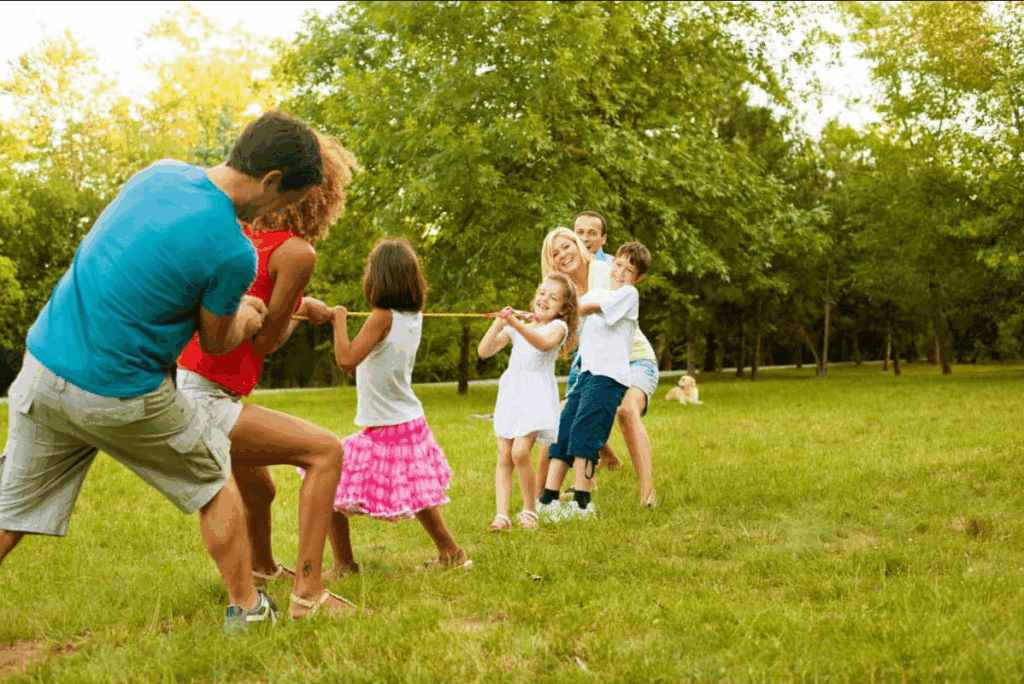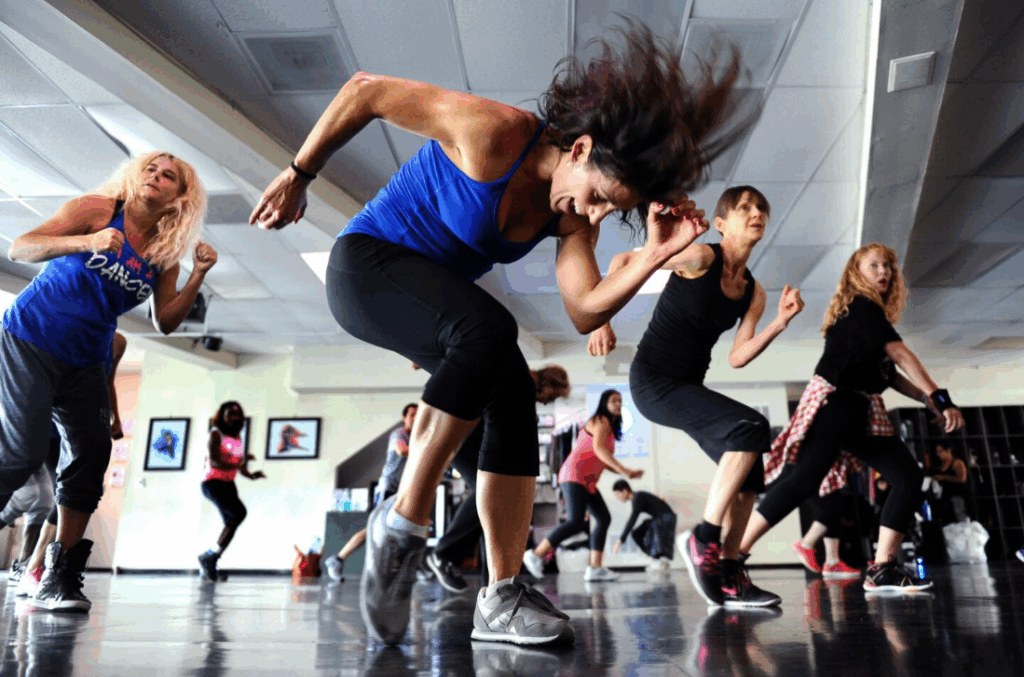Family workouts don’t have to feel like a chore. Transform exercise into backyard Olympic games with relay races, host dance parties that blend cardio with fun music, turn hikes into scavenger hunts, create superhero training circuits that spark imagination, or try storytelling yoga for mindfulness. These five approaches help you build strength, cardio, and flexibility while creating positive associations with fitness.
The secret lies in moving that feels more like play than exercise.

Backyard Olympic Games That Transform Everyday Activities Into Competitive Fun
While traditional workouts might seem intimidating for children, turning exercise into competitive games instantly boosts engagement and enthusiasm. Backyard Olympic Games offer the perfect solution for family workouts that disguise fitness as play.
Create stations featuring different activities. Relay races with egg-and-spoon challenges, hurdles made from household items, and long jump competitions measured with chalk. These outdoor activities not only build cardiovascular endurance but also develop coordination and strength while fostering healthy competition.
For team challenges, divide family members into pairs or groups competing for homemade medals. Keep score across multiple events to crown an ultimate champion, but emphasize participation over winning. These fun fitness routines establish an active lifestyle habit your children will embrace willingly, creating positive associations with exercise.

Dance Party Workouts to Boost Cardio Through Music and Movement
Dance parties offer another dimension to family fitness that combines pure enjoyment with serious cardio benefits. Create playlists for a weekly dance party workout from kids’ favorites to parents’ classic hits. Burn calories and improve coordination and rhythm.
Such group activities naturally increase workout motivation because family members encourage one another to keep moving. Try “80s Aerobics” or “TikTok Challenges” themed dance nights. Follow basic choreographed routines from family dance videos for structured workouts.
The beauty of dance party workouts is how effortlessly they build cardiovascular fitness while establishing healthy habits that don’t feel like exercise at all. Even 15-20 minutes of dancing can deliver impressive fitness results.

Hiking With Purpose and Playful Twists
Outdoor family fitness combines exercise with exploration on ordinary hikes. Use trail time as a scavenger hunt where kids can get points for spotting wildlife or identifying plants while you cover more distance.
Construct natural obstacle courses. Balance on fallen logs, climb over rocks, or race between designated trees. These energetic active play moments build strength, agility, and promote family bonding through exercise.
Follow your journeys in a shared journal. Set progressive fitness goals like increasing distance or climbing steeper terrain each month. These nature adventure challenges become routine wellness activities that children enjoy rather than resist, making healthy habits weekend highlights rather than obligations.

Training Circuits to Building Strength Through Imaginative Play
Superhero training circuits will have kids imagining adventures while building core strength. Turn ordinary workouts into adventures. Create stations for exercises that mimic superhero powers. The “Spider-Man” wall sits, the “Wonder Woman” arm circles, and the “Hulk” squats make strength training fun instead of boring.
You’ll find these kid-friendly workouts require minimal equipment, making them perfect home workouts for any space. Design your circuit with 30-second intervals of bodyweight exercises followed by 15-second “power recharge” rests. Encourage children to design their own superhero moves to add to family exercise routines.
The beauty of superhero training lies in its versatility. You can scale difficulty for different ages while maintaining the imaginative element that keeps everyone engaged and having fun.
Mindfulness and Flexibility for All Ages with Family Yoga Stories
While superhero circuits build strength with dynamic movement, family yoga stories calm the body and mind. You’ll make everyday poses magical, tree poses become magical forests, and warrior poses make family members explorers.
Start with basic, everyone-friendly poses like the mountain pose or the child’s pose, then increase the difficulty as your family progresses. Health benefits go beyond physical improvement. Everyone will notice reduced stress, improved focus, and improved sleep habits.
Try making a story out of 5-7 poses where each family member can contribute plot elements. Such a collaborative approach improves physical flexibility and emotional connection while teaching.
Frequently Asked Questions
How Do I Adjust Workouts for Family Members With Different Fitness Levels?
Offer tiered options within each exercise where beginners modify movements while advanced members increase intensity. Change leadership so everyone contributes, and focus on activities that naturally accommodate different abilities, like relay races.
What Are Indoor Options When Weather Prevents Outdoor Family Fitness Activities?
Try indoor circuit stations, living room dance parties, yoga sessions, scavenger hunts, balloon volleyball, stair climbing challenges, or obstacle courses using furniture. You’ll keep everyone active while staying sheltered from poor weather conditions.
How Can We Maintain Consistency When Family Schedules Conflict?
Create flexible workout windows rather than fixed times. You’ll find success with shorter sessions, rotating leadership roles, and establishing non-negotiable family fitness days that everyone commits to in advance.
At What Age Can Children Safely Start Structured Family Workouts?
Children can safely join structured family workouts around age 3-4. Keep exercises playful, age-appropriate, and brief. Focus on fundamental movements like running, jumping, and balancing rather than formal training.
How Do I Handle a Family Member Who’s Resistant to Joining Workouts?
Find out what objections they have and what activities they enjoy. Don’t force participation. So instead, invite them casually and make workouts fun. Try rotating activity choices so everyone gets to pick sometimes.





